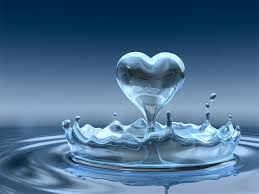1 The LORD is my shepherd; I shall not want.
2 He makes me to lie down in green pastures;
He leads me beside the still waters.The New King James Version. (1982).
(Ps 23:1–2). Nashville: Thomas Nelson.
Convenience, the Container, and the best way to Determine the Composition of Bottled Water
Our bottled water is only as good as the container in which it is stored and the environment in which the bottle is placed. There are a few bottled water companies that place their water in glass containers. However, they are also some of the more expensive choices on the market shelves since glass cost 1-2 times more than plastic and is heavy as well as breakable.
As a result, in order to maximize the convenience of having an economical handy light weight, durable, disposable drinking container the water may take on the plastic taste of the bottle especially if the plastic becomes warm while in the car on a summer day. This defeats the purpose of purchasing bottled water in the first place. Bottles made of PETE or PET (polyethylene terephthalate), a clear durable material that is most inert and carries a number one (1) in the recycle triangle. However, gallon and four-litre jugs often contain high-density polyethylene (HDPE), a flaccid, opaque plastic that carries a number two (2) in the recycle triangle and has the greatest potential to impart a plastic taste to the water. Bottles made of PVC (polyvinyl chloride) is much sturdier and least likely to impart a plastic taste but it is not widely used. The PVC bottles carry a number three (3) in the recycle triangle. Most five (5) gallon water cooler jugs are made of polycarbonate plastic, is very strong and rigid. This type container is highly inert, does not impart a plastic taste and has been used for baby bottles, water bottles, and food storage containers for more than thirty-five years and carries a number seven (7) in the recycle triangle. Being that the water business is a huge business, I have also noticed that Aquafina, produced by Pepsico, has decreased the amount of plastic in their bottles by 50% to create an Eco-Fina bottle that is very flexible which could also adversely affect the integrity of the bottle while saving money on the bottle production.
If the container integrity is not enough to be concerned about, the integrity of the water is often unknown to the consumer and misrepresented by corporate producers. For example, some waters that have had “spring” on their labels were filtered municipal sourced instead. The polar bear on the Great Bear label is not glacier water but water from Breinigsville, Pennsylvania. That being said, the question could be quickly raised, how do we know what is actually in the water regardless of its source.
That is an excellent question. The International Bottled Water Association (IBWA), sets standards for the purity and labeling practices for its members. However, in order to see if the standards are being met each company usually provides chemical analysis or “assay” data upon request. This chemical assay will contain a list of the ingredients presented in the form of a report. Knowing the contents is only as good as understanding what you are looking for since the data that is received from the water bottlers do not usually contain explanations/interpretations with the assay results. Therefore, even with the analysis in hand, one may be at a loss of what the information actually means and how to use this information in order to make the best choice. Bear in mind that the assay analysis may not reveal the pollutants in the water. Let’s face it, that could be bad for business and not willfully reported.
Meyerowitz provided a list of criteria for choosing quality bottled water:
- Choose water that has stable assay statistics over years (if it can be determined. The requested assay results may be dated and may not take into consideration procedural changes that could adversely affect the water quality. (i.e. less plastic in the bottles)
- Arrange for home delivery to maximize convenience and consistency of consumption
- Buy water in glass, polycarbonate, or PETE bottles
- Choose quality over price
- Know the difference between spring, mineral, and purified waters and make the choice that suits you best.
Oh my, this blog is 2x as long as my others but there was much to be shared about this very important section of the inquiry about the best water to drink.
Next installment of this blog will address the methods used to obtain the best drinking water.
Reference: Meyerowitz, Steve. Water: The Ultimate Cure. Book Publishing Company, PO Box99, Summertown, TN 38483,2001

